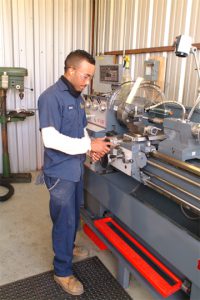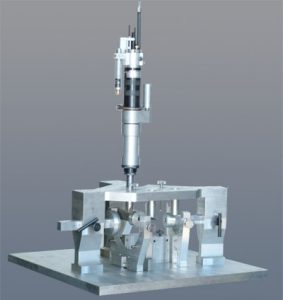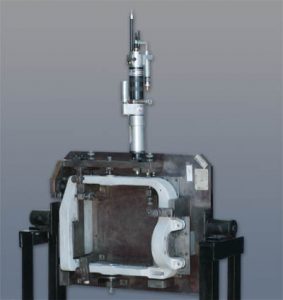 MACHINING
MACHINING
Not all the castings we make are purchased as a raw casting. Depending on the needs of the customer, Decco also provides machined and/or painted castings. Much of the machine work is done in house with our Atrump CNC milling machine and our Clark lathe. We create higher assembly part numbers from our castings usually changing the dash number of the main part number. We also use in house machining for removing drafted surfaces, or creating concentricity. Much of the machine room time is devoted towards machining integrally cast flat and round test bars and for fabricating check/straightening gages and aids.
Many of our machining requirements are outsourced to a competent group of machine shops we have teamed with on many products. Many of these shops purchase casting from us for their own customers. This highly developed interaction has been developed over the years resulting in the best possible machined product a customer could ask for.
TARGETING
We perform targeting either in the machine room or our specially enhanced area dedicated to our gravity defying targeting guns. We develop (or are provided with) fixtures that allow us to machine “spots” into the casting so that the machine house can easily fit the casting into their own fixture and be confident that the variables associated with castings are reduced to almost nil.
Definition of Targeting:
A “DATUM” is a feature or group of features of a part, selected for use as a base from which other features or points are located within specified limits. To achieve consistency in the manner in which measurements are made in all stages of production; i.e., pattern making, casting layout, tooling layout, etc., a system known as target points or datum lines, or datum planes has been devised. For the purposes of this standard, “target point” and “tooling point” are synonymous. This system relates all significant dimensions to a common reference (datum plane). It is strongly recommended that those points or planes from which inspection and/or machining layouts are started, be indicated on the drawing by symbol or other means. Where datum planes or target points are not indicated they shall be selected by the foundry, which will choose surfaces formed by the most stable portion of the mold. Such designations tend to control the accumulation of tolerances in addition to their prime purpose of establishing a common location from which to work. It is preferred that they be surfaces not affected by mold parting. Also, the surfaces at which gates and risers are to be placed are unsuitable as target points as a result of trimming and rough grinding operations. Target points should be avoided if possible on cored or tapered surfaces. They should be located close to the extremities of the casting whenever possible to eliminate variations in alignment due to projecting small surface irregularities. The designer of a casting, the tooling engineer and the foundry should work together in establishing target points or datum planes because they directly influence casting cost not only from the tooling standpoint but also from the foundry standpoint.
Targeting Device in Action


